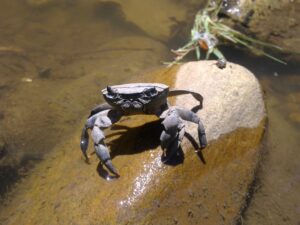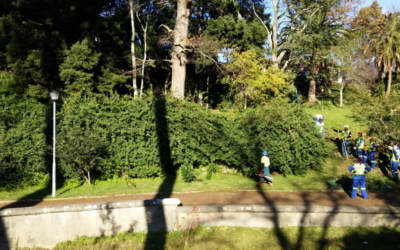For most of us the sight of lush green-leafed tress hanging over a gentle flowing river, invokes a sense of serenity and calm. However, it is true what they say, that “too much of a good thing is bad”, and this is exactly the case of the trees along the Liesbeek River. To be more specific we are talking about the alien trees along the Liesbeek, of which there are many. Alien trees by simple definition, are trees that do not originally occur within a specific geographical area and here in lies their success. They are able to out-compete our own native species because they might be better suited to the environment (e.g. fast growing) and they also have no competition or predation. Within the Western Cape, the majority of alien trees mostly originate from Europe and parts of Australia where water is readily available throughout the year. Hence these alien tree dominate the banks of our rivers as they require vast amounts of water (an example is the Port Jackson, of which a full grown tree can use up to 200 litres of water a day!). One can imagine from this fact, the negative impacts they have on our rivers. A major impact is the reduction in the amount of water flowing in the river because the groundwater (which makes sure our rivers flow in summer) is diminished by the alien trees sucking it all up.
Another impact arises out of the fact that rivers in the Western Cape are known as systems with low productivity because of the nature of the soil and the indigenous vegetation. What this means, is that our native vegetation is slow growing and drop leaves at a constant rate throughout the year. Alien trees on the other hand produce vast quantities of leaves on a seasonal basis (those of you who have to take the rake out in autumn will know what I mean). For the trees along the river, the majority of their leaves fall into the flowing waters of the river. This creates a problem for all the aquatic animals in the river that eat the leaves (from tiny aquatic insects to crabs). The river becomes overloaded with all the leaves in one season and so the shredders (aquatic animals that tear up and eat the leaves in a river) cannot clean the river of all decaying organic material. The increase in leaf litter helps to create a deeper silt layer and increases the nutrients available in the river, both of which the natural flora and fauna are not used to, and so the aliens trees are able to further out compete the natural plants as they thrive in nutrient rich environments.
Along a river system it is healthy to have patches of sun and shade as different aquatic insects require differing amounts of both, in the water and along the banks. Unfortunately because many alien trees have the ability to completely overrun an area (a good example would be the Poplar Tree) they create large areas of shade along the river. This affects many of the aquatic insects that require sun. For example dragonflies love to bask in the sun and studies have shown, that by removing big alien trees in river systems helps to increase the amount of different species of dragonflies along the river. This is very important as we often use aquatic invertebrates to determine the health of a river and if they are absent from a river system we may wrongly presume it is because of the water quality, when it is in fact actually because they do not have the right habitat available.
The system of using aquatic invertebrates is called SASS (South African Scoring System) and I will put an article about the way it works next week. I hope this little piece of information has broadened your understanding of why we are constantly looking to remove alien trees along our river, and if you have any questions or comments please feel free to contact me ([email protected]).
See you on the river,
Jason
Liesbeek River Project Manager



